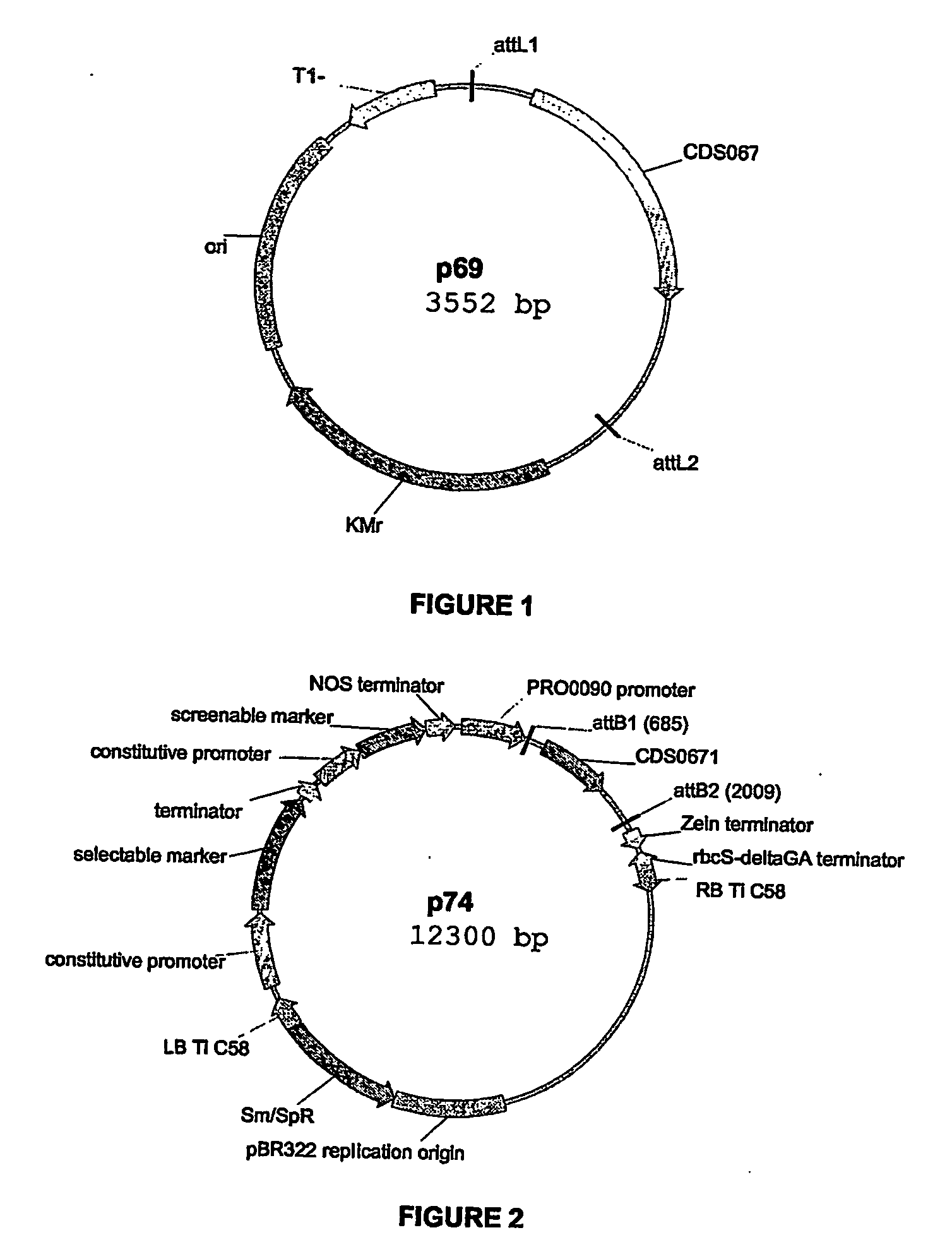Plants having modified growth characteristics and method for making the same
- Summary
- Abstract
- Description
- Claims
- Application Information
AI Technical Summary
Benefits of technology
Problems solved by technology
Method used
Image
Examples
example 1
Cloning of CDS0671
Cloning of the TAD Gene Fragment from Tobacco
[0083] A cDNA-AFLP experiment was performed on a synchronized tobacco BY2 cell culture (Nicotiana tabacum L. cv. Bright Yellow-2), and BY2 expressed sequence tags that were cell cycle modulated were elected for further cloning. The expressed sequence tags were used to screen a tobacco cDNA library and to isolate the cDNA of interest, namely one coding for TOB3-like AAA-ATPase domain gene (CDS0671).
Synchronization of BY2 Cells.
[0084] A tobacco BY2 (Nicotiana tabacum L. cv. Bright Yellow-2) cultured cell suspension was synchronized by blocking cells in early S-phase with aphidicolin as follows. The cell suspension of Nicotiana tabacum L. cv. Bright Yellow 2 was maintained as described (Negate et al. Int. Rev. Cytol. 132, 1-30, 1992). For synchronization, a 7-day-old stationary culture was diluted 10-fold in fresh medium supplemented with aphidicolin (Sigma-Aldrich, St Louis, Mo.; 5 mg / l), a DNA-polymerase α inhibitin...
example 2
Vector Construction for Transformation with PRO0090-CDS0671 Cassette
[0090] The entry done p69 was subsequently used in an LR reaction with p0830, a destination vector used for Oryza sativa transformation. This vector contains as functional elements within the T-DNA borders: a plant selectable marker; a screenable marker; and a Gateway cassette intended for LR in vivo recombination with the sequence of interest already cloned in the entry done. Promoter PRO0090 was located upstream of this Gateway cassette.
[0091] After the LR recombination step, the resulting expression vector p74 (FIG. 2) was transformed into Agrobacterium strain LBA4044 and subsequently into Oryza sativa plants.
example 3
Transformation of Rice with PRO0129 up-CDS0716
[0092] Mature dry seeds of Oryza sativa japonica cultivar Nipponbare were dehusked. Sterilization was done by incubating the seeds for one minute in 70% ethanol, followed by 30 minutes in 0.2% HgCl2 and by 6 washes of 15 minutes with sterile distilled water. The sterile seeds were then germinated on a medium containing 2,4-D (callus induction medium). After a 4-week incubation in the dark, embryogenic, scutellum-derived calli were excised and propagated on the same medium. Two weeks later, the calli were multiplied or propagated by subculture on the same medium for another 2 weeks. 3 days before co-cultivation, embryogenic callus pieces were sub-cultured on fresh medium to boost cell division activity. The Agrobacterium strain LBA4404 harbouring the binary vector p3076 was used for co-cultivation. The Agrobacterium strain was cultured for 3 days at 28° C. on AB medium with the appropriate antibiotics. The bacteria were then collected an...
PUM
| Property | Measurement | Unit |
|---|---|---|
| temperature | aaaaa | aaaaa |
| Tm | aaaaa | aaaaa |
| temperature | aaaaa | aaaaa |
Abstract
Description
Claims
Application Information
 Login to View More
Login to View More - R&D
- Intellectual Property
- Life Sciences
- Materials
- Tech Scout
- Unparalleled Data Quality
- Higher Quality Content
- 60% Fewer Hallucinations
Browse by: Latest US Patents, China's latest patents, Technical Efficacy Thesaurus, Application Domain, Technology Topic, Popular Technical Reports.
© 2025 PatSnap. All rights reserved.Legal|Privacy policy|Modern Slavery Act Transparency Statement|Sitemap|About US| Contact US: help@patsnap.com



